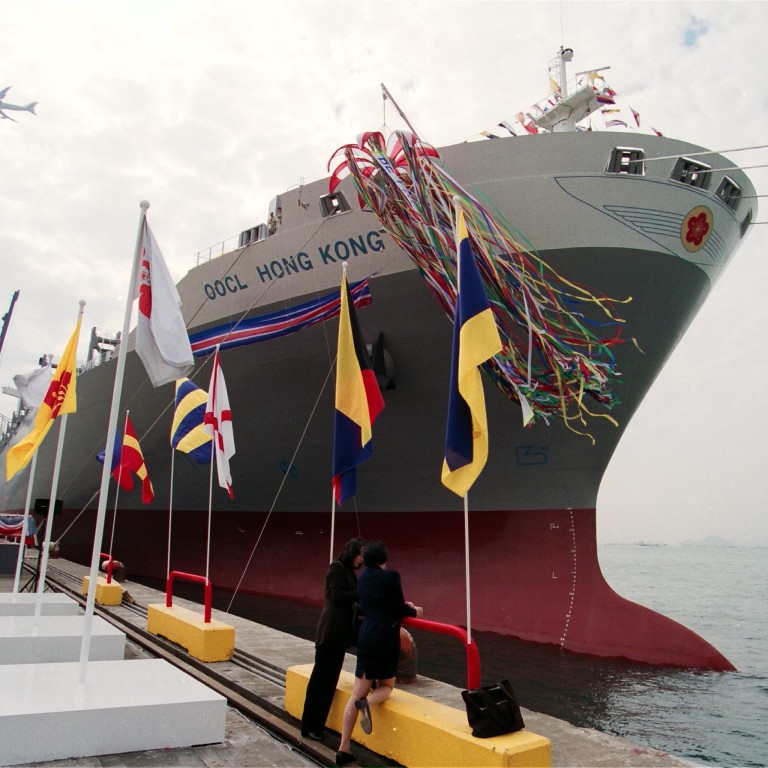
Update | Orient Overseas said H1 net profit up 32 per cent to US$238.6 million
Orient Overseas (International) Limited yesterday reported its first-half net profit jumped nearly a third as cheaper fuel costs helped it tide over a slump in freight rates.
Net profit of OOIL, the holding company of Orient Overseas Container Line, rose 32 per cent year on year to US$238.6 million even though revenue declined 6 per cent to US$3 billion as overcapacity and weak demand continued to plague the container shipping industry.
“The volatility of freight rates indicates how competitive the industry is. The theme of the industry this year is carriers’ efforts in cost-efficiency and yield management amid a weak market,” said acting chief financial officer Alan Tung Lieh-sing.
OOCL saw total cost per standard container drop 9 per cent in the first six months of the year, achieved mainly through a 38 per cent reduction in bunker costs. The savings also boosted the company’s bottom line despite lower vessel utilisation and revenue.
The closely watched Asia-Europe freight index dropped to %a seven-year low to below US$300 per 20-foot equivalent unit in the second quarter, a level that can barely cover fuel costs, let alone other operating and capital costs.
The free fall in freight rates was the consequence of a race among shipping lines to order larger ships over the past two years, coupled with a deteriorating economy in the euro zone.
Collapsing rates prompted many carriers to take unusual action such as temporarily withdrawing services from the market just before the traditional third-quarter peak season,
“In view of such a tough market environment, some carriers have chosen profitability over cargo volume,” said Bocom International analyst Geoffrey Cheng, adding OOIL’s results were better than expected.
Tung, son of former Hong Kong chief executive Tung Chee-hwa, highlighted surging cargo volumes in transpacific routes and better supply-demand balance as sources of confidence for next year. Transpacific eastbound cargo climbed 8.5 per cent in June, OOCL figures shows.
“Transpacific volumes are driven by US consumption, not China’s consumption. So even if China is having a tough year economically, I’ll look at the numbers in a balanced way,” he said.
Consensus vessel supply and trade demand growth for next year stand at 5 per cent and 5.1 per cent respectively, improving from the 7.1 per cent and 4.7 per cent forecast for this year.
Cheng, however, warned of over-optimism. “It is likely the pressure felt in the second quarter will continue into the third. Impact from the new vessels delivered this year will still be carried forward. I remain cautious.”
Asked about a much-speculated takeover of Singapore’s national carrier Neptune Orient Lines, Tung said: “We’re following the press as much as you are. [Mergers and acquisitions] have been a topic for the industry for 20 to 30 years. Actual consolidation is far more difficult than analysts’ calculation of the figures.
“We have 18 to 19 major players on the ground. I don’t think a single consolidation case will change the overall commercial dynamics. Our margins are not going to double or collapse because of [a Neptune] event.”

